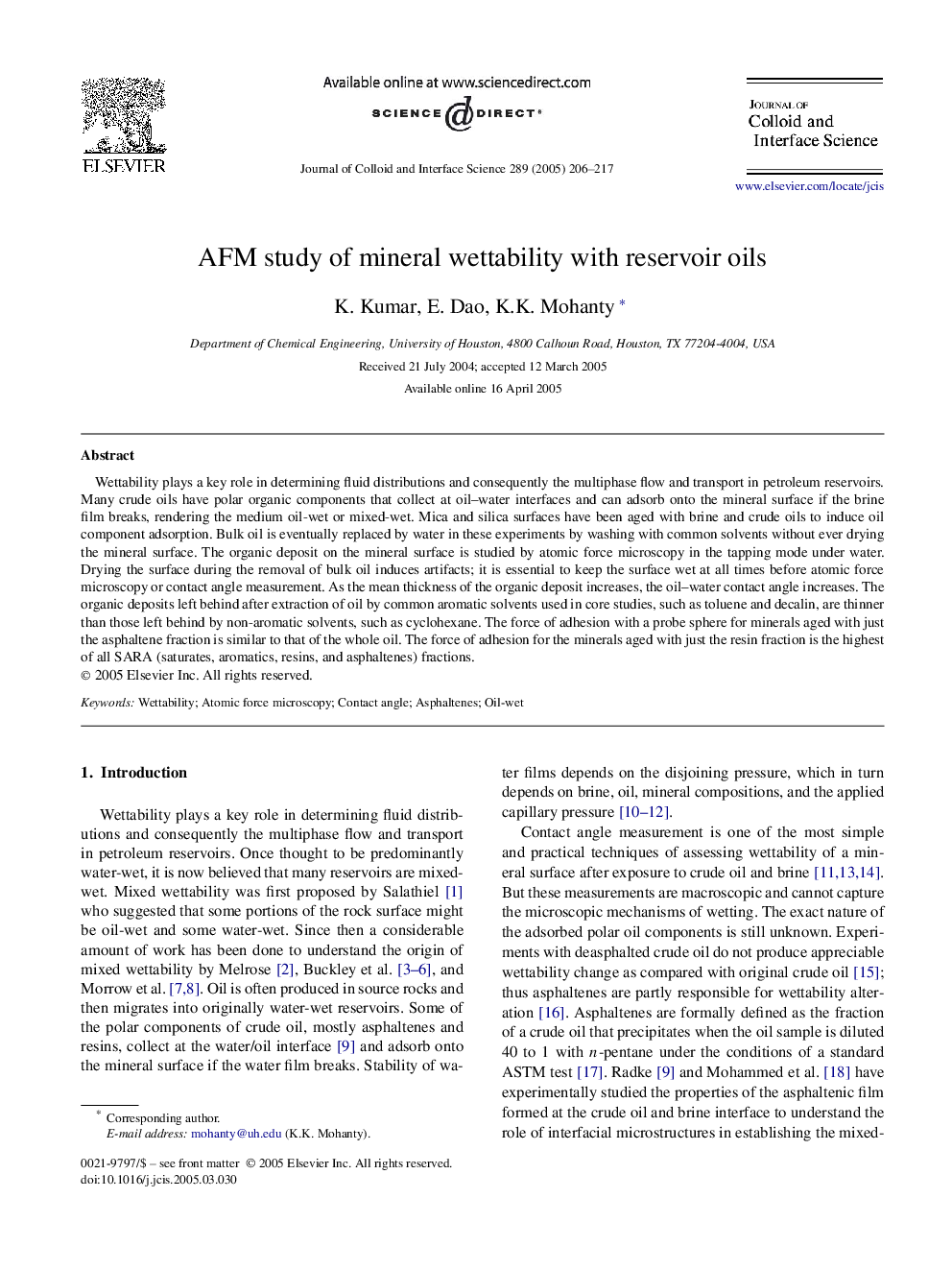| Article ID | Journal | Published Year | Pages | File Type |
|---|---|---|---|---|
| 10377745 | Journal of Colloid and Interface Science | 2005 | 12 Pages |
Abstract
Wettability plays a key role in determining fluid distributions and consequently the multiphase flow and transport in petroleum reservoirs. Many crude oils have polar organic components that collect at oil-water interfaces and can adsorb onto the mineral surface if the brine film breaks, rendering the medium oil-wet or mixed-wet. Mica and silica surfaces have been aged with brine and crude oils to induce oil component adsorption. Bulk oil is eventually replaced by water in these experiments by washing with common solvents without ever drying the mineral surface. The organic deposit on the mineral surface is studied by atomic force microscopy in the tapping mode under water. Drying the surface during the removal of bulk oil induces artifacts; it is essential to keep the surface wet at all times before atomic force microscopy or contact angle measurement. As the mean thickness of the organic deposit increases, the oil-water contact angle increases. The organic deposits left behind after extraction of oil by common aromatic solvents used in core studies, such as toluene and decalin, are thinner than those left behind by non-aromatic solvents, such as cyclohexane. The force of adhesion with a probe sphere for minerals aged with just the asphaltene fraction is similar to that of the whole oil. The force of adhesion for the minerals aged with just the resin fraction is the highest of all SARA (saturates, aromatics, resins, and asphaltenes) fractions.
Related Topics
Physical Sciences and Engineering
Chemical Engineering
Colloid and Surface Chemistry
Authors
K. Kumar, E. Dao, K.K. Mohanty,
